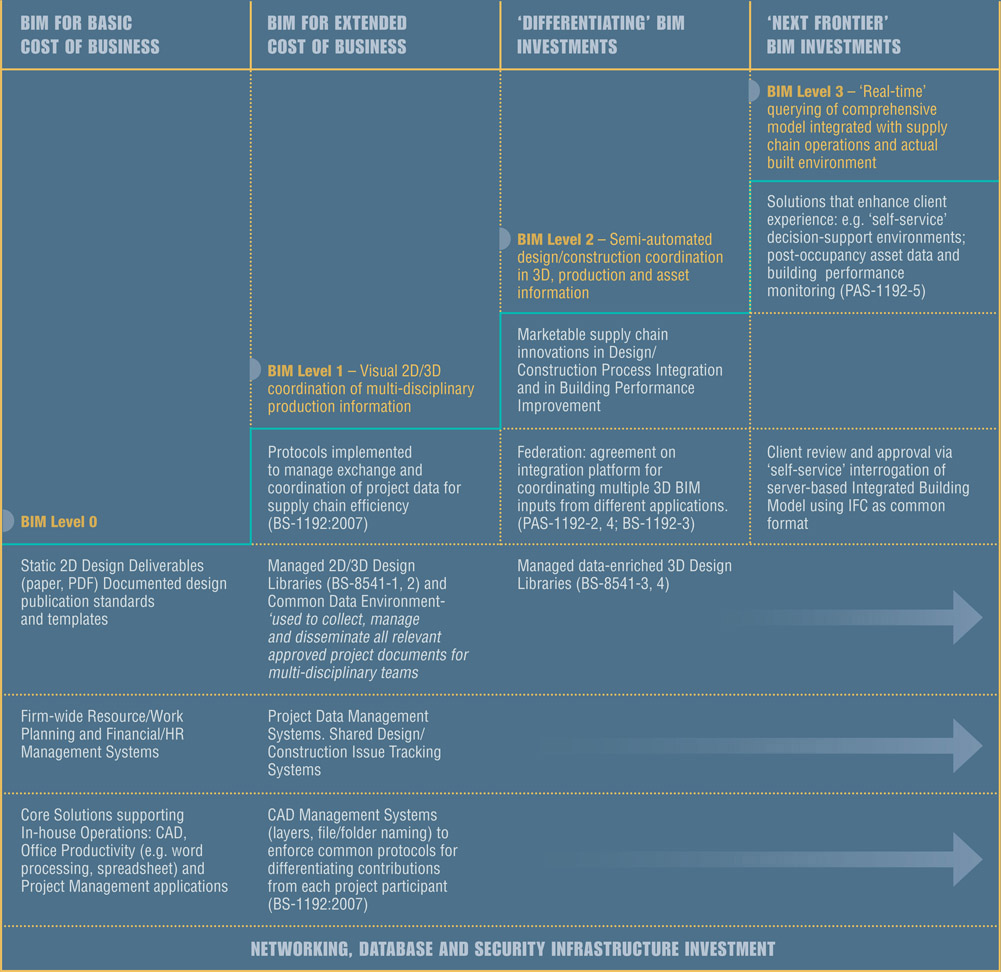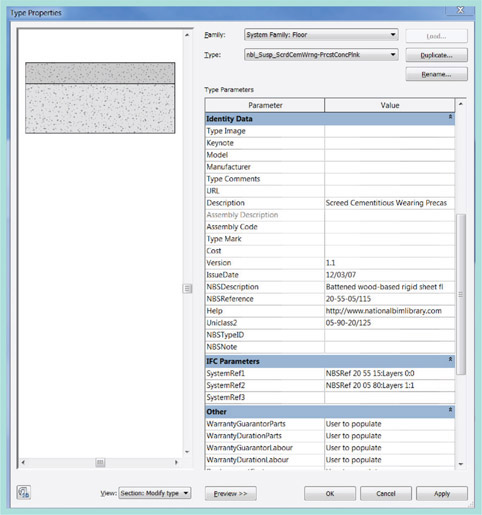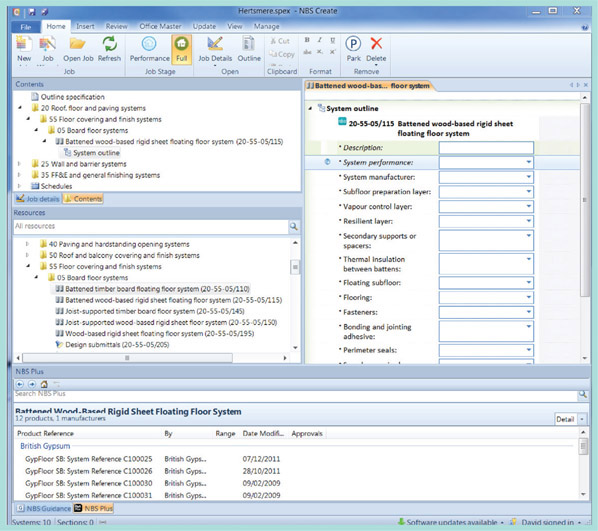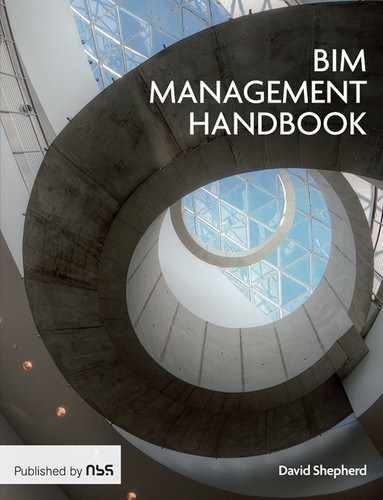03
Assessing your Practice and Guiding it to BIM-Readiness

Introduction
We begin this chapter by identifying the three characteristics that are key to the successful implementation of BIM. In particular, it is recommended that firms adopt a gradual tiered approach. This progresses in stages, from first deploying BIM to improve the basic cost of doing business, to eventual ‘next frontier’ BIM investments.
The key coverage of this chapter is as follows;
- The three characteristics of BIM implementation success
- Tiered investment in BIM for design, construction and operations
- Precursors to BIM Level 2 project delivery
- Assessing your firm’s BIM readiness
- Organisational BIM assessment.
The Three Characteristics of BIM Implementation Success
For the implementation of BIM to deliver measurable success, there is considerable evidence1 that managerial innovation must develop in conjunction with technology to facilitate the following kinds of beneficial change:
- More effective deployment of the firm’s workforce
- Increasing the efficiency of staff in delivering the current range of services
- The development of new services that clients perceive as adding value.
A tiered approach to implementing BIM provides time for managerial innovation to keep up with the pace of technology adoption.
Tiered Investment in BIM for Design, Construction and Operations
The table on the facing page, consisting of four progressive tiers, provides a way of assessing your firm’s current position on the BIM maturity ladder. It also indicates that the technology for each tier should be implemented comprehensively as a precursor to success at the next level.
For instance, if a project team lacks documented in-house design publishing standards (BIM Level 0) or has no experience or success in establishing a Common Data Environment for collaboration through CAD (BIM Level 1), they are unlikely to achieve the benefits of coordinated information exchange through BIM at Level 2.
Equally, it makes no sense for a construction supply chain team to make the bold transition to a server-based Integrated Building Model environment (BIM Level 3) when its attempts to regularly coordinate independently generated models at BIM Level 2 have foundered badly.
The above is not to say that organisations must meticulously introduce every element of BIM Levels 0 and 1 adoption before implementing BIM Level 2. Nevertheless, they must attend to the features of Levels 0 and 1 that are foundational to Level 2.

Figure 3.1 Tiers of BIM investment from CAD-based collaboration to fully integrated BIM1
Precursors to BIM Level 2 Project Delivery
Nevertheless, for the delivery of projects at BIM Level 2, it is essential to establish some aspects of those lower tiers:
- Leadership roles in firms that are new to BIM
- Documented design publication standards
- Project data management and issue tracking systems
- Management of data-rich model content
- Usage of a data storage naming protocol
- Standardised file-based design coordination processes.
Whether your firm is a conglomerate or a small design practice, there are two preparatory roles that are indispensable to the success of a firm’s BIM adoption. These are the BIM Sponsor and the BIM Champion and they should precede even formally established BIM Manager and BIM Coordinator roles. (The role of BIM Manager is explained in the section of Chapter 2 entitled Distinctions between roles and official appointments.) Despite the importance of adherence to BIM standards, for small to medium enterprises (SMEs), there remains justifiable concern about hiring BIM staff in advance of winning a project that requires Level 2 compliance. For these companies, it is important to emphasise that the PAS-1192 specifies leadership roles, and not full-time appointments for BIM. The BIM Sponsor should be a senior officer of the firm who will exercise strategic influence in setting corporate goals and objectives for BIM adoption. This role requires direct authority over major resources. In contrast, the BIM Champion could be much further down the organisational chain of command, but be a person who has shown the ability to gain the support of colleagues in implementing technological change. In Influence: The Psychology of Persuasion.2 Robert Cialdini identified six key factors that were employed in influencing and persuading others to adopt a course of action. These are:
This means that the firm-wide implementation of BIM, which involves major organisational change, cannot be effected by authority and expertise alone. It also requires leadership. The latter can be exercised by any person who has the support and social skills needed to enlist other staff in the task of company transformation. It is important to note that while the roles needed to implement BIM Level 2 should eventually be invested with official authority, the organisation should begin by identifying those members of staff who have demonstrable social and leadership skills. While many practices view an IT specialist or an enthusiastic design technologist as the obvious choice to become BIM Champion, there are other less technically adept but nonetheless persistent and charismatic individuals who might be more effective. On that basis, here are seven recommendations that will help the prospective BIM Sponsor and Champion to lead successfully. ‘Crossing the Chasm’ is a best-selling management guide written by technology adoption expert Dr Geoffrey A. Moore. In it, Moore explains that in fact there is a discontinuity, known as the chasm, which hinders the mainstream adoption of innovations, like BIM.3 While it is relatively easy for firms to adopt technologies that simply improve on the existing mechanisms by which they add value – these are known as sustaining technologies and are represented by exactly what CAD did for 2D manual drafting – a disruptive innovation like BIM will, by contrast, immediately emphasise tools that the mainstream considers secondary to its core business. These tools may lack some of the features that are important to the prevailing use of computer graphics technology (CAD). The genuine (and partly justified) concern of the sceptical is that, whatever the claimed benefits, the new technology will incur significant additional costs due to new software, customised configurations, additional staff training, specialised support personnel and structured implementation programmes. The unexpected tipping point for these firms to implement the new technology is when the capabilities of the latter (for example, 3D coordination and automatic schedules) are suddenly prioritised by clients. As more and more Requests for Proposals seek detailed evidence of documented processes for reducing design re-work through features such as multi-disciplinary clash detection, it may indeed prompt a thorough investigation of BIM adoption across the competitive landscape. Nevertheless, the way to catch up should not involve the knee-jerk reaction of recruiting a BIM Manager immediately and trying to source a requisite ‘box’ of BIM. In a 2013 study by Eadie et al, ‘An Analysis of the Drivers for Adopting BIM’ (ITcon Vol. 18 (2013))4, current users and non-users of BIM were contrasted in terms of the relative importance they placed on different drivers for implementing the technology: From the graph, it’s important to notice that the drivers for current non-BIM users are primarily Government Pressure, Client Pressure and Competitive Pressure. The mooted benefits of BIM are secondary factors for those who have not yet deployed the technology. In an organisation that is only just beginning to think about adopting BIM, the role of a BIM Sponsor would probably be that of a boardroom pioneer, venturing forth into uncharted territory with a mandate focused more on alleviating these competitive pressures, rather than on the full integration of BIM into current work practices. This is important because, if BIM adoption is solely driven by competitive pressures, it will not be viewed in terms of delivering process improvement. Instead, it will be jettisoned when other initiatives require major investment and are considered more capable of impressing potential clients. In those circumstances, it will be difficult for a BIM sponsor to gain the level of adoption needed to make a success of BIM. What is needed in this situation is for the board to review case studies, to talk to firms that are further along in BIM adoption, and to devise a long-term strategy (see Chapter 1) for achieving all three characteristics of BIM success, while remaining aligned with the asset management strategy of its clients. Figure 3.2
Relative importance of BIM adoption drivers to current BIM users and non-users4 Project documentation should – like other organisational publications – maintain a consistent corporate identity. Consistency conveys positive messages about service reliability and professionalism. Establishing a ‘house style’ for conventionally required project deliverables is the most basic level of output consistency. If a practice cannot maintain and manage consistency for even its published design documentation, it will be impossible to control the quality of additional data derived from BIM and exchanged in digital format. Documentation and training should be provided to establish the firm’s default publication standards for the full variety of typical drawing types and scales. Provision for project-specific variations to these standards should be documented in the BIM Project Execution Plan (described in Chapter 2). This process of adopting publication standards is facilitated by the provision of drawing border templates, an approved symbol library and especially by approved exemplar drawings. It’s worth noting that on completing the fundamentals training course, the users will able to repeat the steps that they followed, but will not be able to apply them immediately, confidently and quickly to a variety of project types. It will take a few months of post-training practice for these skills to develop sufficiently for them to complete a basic small-scale scheme design submission via BIM. Even after this, there are further skills specific to more challenging project work in BIM that will, once mastered, deliver benefits across the entire practice. In weighing these benefits against the marginal implementation of the technology, it would make sense to budget for more advanced training for staff to accomplish the following:
Let’s assume that, in line with the Government Construction Strategy, a firm has agreed on the following BIM goals:
Whereas the former provides the benefit of better integrated multi-disciplinary design and construction information, the latter ensures that the client can identify the salient differences between several design alternatives with greater speed and clarity. Within the project data management system, it is possible to compare the threads of discussion associated with a variety of coordination issues and design options before and after implementing BIM. The tracking system should be reviewed regularly to compare the relative length and content of email exchanges for similar issues relating to projects of similar complexity. This should provide both qualitative and quantitative comparisons of whether BIM has reduced coordination errors and improved the ease with which clients review design alternatives. In fact, there is little hope of evaluating these improvements objectively without a system for managing project data and tracking design and contractor issues through to resolution. While the IT systems developed for these purposes can range from simple email add-ons to dedicated full-featured applications, none can function effectively without full staff cooperation. This is best accomplished by setting expectations through documented standards, providing support, encouragement and training at all levels and ensuring that the board of management endorses and adheres to these firm-wide standards as central (rather than peripheral) to its strategic goals. Firms that engage in partnering will need to adopt project-wide protocols and data management in order to ensure that data and issue tracking is managed consistently across the various disciplines involved in the process of delivery. Figure 3.3
Library object - data attributes for a floor type5 In addition to documented templates and output standards, responsibility for managing the quality of project deliverables should be clearly assigned. Initially, this would be the task of the organisation’s BIM Champion – the chief librarian of model content. Their main task is to organise model elements (which should be consistent in the level of detail and information) into a logical folder structure. The file names and the specification data attached to them should be sufficient to facilitate efficient library searches. This measure is efficient since the time taken for one person to archive the elements regularly from each project into a shared office-wide library is easily recouped through their subsequent re-use (vs. re-creation) by the teams assigned to future projects. Library objects are graphic representations of design/construction components that are classified by attaching data to them to define their ‘real world’ properties. The image on the left shows a library object from the online NBS National BIM Library as defined for a particular floor type. The NBS BIM Object Standard - http://www.nationalbimlibrary.com/nbs-bim-object-standard. The list on the left specifies the various properties associated with the ‘real world’ equivalent of this floor type. These properties are also known as data attributes. In its role as the organisation responsible for UK building specification standards, the NBS has developed a variety of other BIM objects as exemplars for those being uploaded to the same library by building product manufacturers. Consistency in classifying and assigning the full range of data attributes enables them to be accurately and efficiently re-used throughout the project lifecycle. For instance, one of the floor attributes shown on the left has the NBS Reference 20-55-05/115, a reference to the applicable specification clause. The NBS reference uses Uniclass 2, the nationally recognised classification system for construction activities and elements and for different building operations and usages. Every building product specified through NBS should reference this classification system. For a given project stage, if this data can relied upon in accordance with the agreed level of information (see Chapter 9), it can be developed and transferred to others through the use of the model. For instance, by means of the NBS Create on-line specification creation tool, the specifier would create the corresponding detailed specification clauses. These clauses would be linked to instances of the same library objects in the model. On receipt of the model and the file generated by NBS Create (*.spex), the contractor’s estimators would use NBS Plus (a product search tool within NBS Create) to search for products that comply with the issued specification. By comparison with previous, slower methods of accomplishing the same task (by exchanging either paper, or spreadsheets and electronic prints), this re-use of digital specification data represents considerable time-saving. Nevertheless, this saving is squandered when someone in the process abandons compatible formats for those that limit re-use in other software applications. Figure 3.4
NBS Create interface re-uses element data attributes for specification6 In fact, the different types of data attributes, in accordance with BS-8541-4, fall into three major categories described below:
On behalf of the project team, the BIM Manager should establish a definitive list of the key attributes (also known as parameters) that should be consistently applied to various categories of model elements. This list becomes the basis for element scheduling, comparison and sorting. An essential part of BIM-readiness is a consistent naming protocol for data storage elements such as folders, files and sub-file element groupings. This allows users to apply standardised criteria for sifting quickly through large amounts of multi-disciplinary data. While BS-1192:2007 provides a framework for this purpose, it was primarily developed with BIM Level 1 CAD file exchange in mind. While this may be fine for CAD file exchange, its length makes it unsuitable for annotating title blocks and drawing reference symbols, such as section and elevation marks. For the latter, the naming of views within the model environment should be truncated and read in conjunction with the sheet name in the title block (see below). Figure 3.5
BS-1192 file name convention7 Figure 3.6
Section Mark referencing the complete BS-1192 sheet name Figure 3.7
Section Mark referencing an abbreviation of the full BS-1192 sheet name BS-1192 outlines the recommended revision process that uses superimposed CAD drawings (known as reference files, or xrefs) for multi-disciplinary visual coordination. For instance, the engineer would ensure that the duct layout being drawn in the mechanical CAD file correctly fits the corridor layout by displaying the architect’s floor plan CAD file as a background. The name of a file issued as a subsequent revision to the previous architectural floor plan drawing would be suffixed P02 and distributed through the project’s file sharing repository. This process also works well for exchanging models. Revisions to a previously uploaded model suffixed P01 should be uploaded to the shared project repository with a suffix increment, i.e. P02. According to BS-1192, after issuing the revision, the work-in-progress file name would be updated to P02.1 and thereafter in .1 increments until the model is shared with the suffix P03. The application of these intermediate increments before a major revision is known as versioning. While this process helps to easily distinguish updates in the model made internally and externally, it can be further complicated by changes of design development responsibility at each stage of the project. So, for instance, at a certain stage, the architect may delete some elements from the model (say, architectural columns) while the engineer replaces them with their versions of those elements (structural columns). This part of the standard should not be mandated for the internal use of BIM software that can create and store several work-in-progress versions as part of its backup functionality. Users can also set the number of backups that will be stored in the sub-folder where the model is located. Figure 3.8
Model backups listed in Restore dialog box (Autodesk Revit®)5 If the maximum number of backups is set to 10, it signifies that when backup 11 is completed, the first backup will no longer be
retrievable by this means. For this reason, the organisation’s IT administrator should ensure that, for all projects, these backup subfolders are part of the daily folder system backup procedure. It’s also useful to run spot checks by posing an unexpected request for IT to retrieve a particular backup folder from a particular date. Figure 3.9 Dialog box option for setting number of backups to 10 (Autodesk Revit®)5 If your BIM software has this backup functionality, the recommendation for applying BS-1192 to model naming internally would be to drop the revision/version suffix: As well as being easier to implement, this naming convention also works in alignment with the known capabilities of BIM software. For files exchanged with external parties through the Common Data Environment, it still makes good sense to add the revision suffix as a means of distinguishing updates issued by each project team member. Additionally, design responsibilities might need to be assigned at the level of sub-elements located in separate models. For instance, the structural floor would be modelled in the engineer’s model, while its corresponding suspended floor is located in the architectural model. In these instances, it is advisable to maintain a separate but linked model file dedicated to the sharing and monitoring of changes to datums such as gridlines, levels and reference geometry, including the building footprint and site offsets.Leadership roles in firms that are new to BIM
What sort of influence is needed to implement BIM successfully?
Tackling the effect of late BIM adoption on leadership priorities

Establish Documented Design Publication Standards
Project Data Management and issue Tracking Systems

Management of Data-Rich Model Content
Specification, assessment and simulation attributes

Using a Data Storage Naming Protocol



Standardising File-Based Design Coordination Processes


Organisational BIM Assessment
A key part of preparing for BIM Level 2 is to conduct an organisational assessment of its capabilities. The CPix BIM Assessment forms (examples at http://www.cpic.org.uk/cpix/cpix-bim-assessment-file/) are questionnaires that are now a key part of Pre-Qualification Questionnaires used to evaluate tenderers.

Figure 3.10
Example of internal work-in-progress file naming convention
Making sense of every question may feel daunting for practices or construction companies that are new to BIM. Nevertheless, answering these questions with candour provides a useful self-assessment of the current readiness to implement BIM Level 2. The assessment questions relate to three key concerns:
- The organisational significance of BIM.
- Resourcing and commitment to BIM for coordination and in-depth review of design alternatives.
- The organisational, office and project roles involved in driving BIM adoption.
The five sections of the assessment will need to be completed as a means of demonstrating capability to deliver projects at BIM Level 2:
- Standard Information (contact details).
- BIM ‘Gateway’ Questions – responses should demonstrate firm-wide commitment to project data management standards, iterative model development processes, model element libraries, training programmes, qualifications and coordination in BIM.
- Understanding and supporting evidence relating to 12 key applications of BIM.
- Minimum of three recent reference projects using BIM.
- Detailed BIM Capability Questionnaire.
While no company can gain BIM project experience overnight, assessing BIM readiness at regular intervals along the course of adoption can still be thoroughly valuable exercise.
Conclusion
BIM Level 2 readiness will never be achieved through short-term initiatives. This is because its efficiencies are primarily inter-departmental and inter-organisational. As such, firm-wide roles, such as the BIM Sponsor and BIM Champion, and long-term resource commitment are key to its success.
We have identified six essential precursor to BIM Level 2 readiness. By conducting a regular BIM capability assessment, you can ascertain whether they are in place.
In the next chapter, we review the expectations of the clients in terms of BIM maturity levels.
